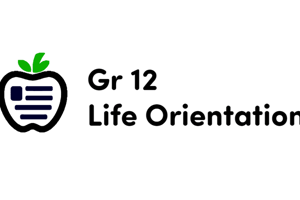Podcast
Questions and Answers
What are the components of health-related fitness that students are encouraged to maintain in physical education?
What are the components of health-related fitness that students are encouraged to maintain in physical education?
Cardiovascular endurance, muscular strength, flexibility, and body composition
How does team sports and game play contribute to students' skill development in physical education?
How does team sports and game play contribute to students' skill development in physical education?
Developing teamwork, communication, leadership, and collaboration skills
What is the focus of social emotional learning in physical education?
What is the focus of social emotional learning in physical education?
Practicing empathy, respect, and problem-solving
Name a teaching methodology commonly used in physical education that involves students engaging in various games and challenges.
Name a teaching methodology commonly used in physical education that involves students engaging in various games and challenges.
How do students benefit from collaborative learning in physical education?
How do students benefit from collaborative learning in physical education?
What are some benefits of Physical Education beyond physical health?
What are some benefits of Physical Education beyond physical health?
What are the components of Gross Motor Skills in a Physical Education curriculum?
What are the components of Gross Motor Skills in a Physical Education curriculum?
How do Fine Motor Skills contribute to personal development in Physical Education?
How do Fine Motor Skills contribute to personal development in Physical Education?
Explain the importance of teamwork in Physical Education.
Explain the importance of teamwork in Physical Education.
How does Physical Education help in reducing stress levels?
How does Physical Education help in reducing stress levels?
Study Notes
Uncovering Physical Education's Essentials
Physical education (PE) is more than just playing sports after school hours. It's a vital aspect of holistic development, fostering both physical fitness and social skills from early childhood through adolescence. In this exploration, we'll unpack PE's foundations and delve into its importance in shaping healthy individuals and communities.
Benefits of Physical Education
The positive impact of PE on children's wellbeing extends beyond physical health. Participating in structured, age-appropriate activities can enhance students' cognitive abilities, boost self-esteem, encourage teamwork, improve hand-eye coordination, reduce stress levels, and promote lifelong habits that foster good overall health.
Components of Physical Education
A comprehensive Physical Education curriculum typically includes several components designed to develop various motor skills and personal qualities:
- Gross Motor Skills: These large body movements focus on improving balance, agility, coordination, and spatial awareness, often involving games like soccer, basketball, swimming, and dance.
- Fine Motor Skills: Smaller muscle movement training helps with tasks such as writing, drawing, tying shoes, and using technology devices appropriately. Examples might include working on grip strength with finger exercises or manipulating small objects like tennis balls.
- Health-related Fitness: This component aims to help students understand the importance of maintaining optimal cardiovascular endurance, muscular strength, flexibility, and body composition. Activities may include running, jumping jacks, pushups, stretching routines, and yoga.
- Team Sports & Game Play: Developing teamwork, communication, leadership, and collaboration skills through organized play, either individually or as part of a group.
- Social Emotional Learning: Opportunities to practice empathy, respect, and problem-solving within the context of physical activity. For example, students might learn conflict resolution strategies during a team sport game.
Teaching Methodologies
Teachers employ different teaching techniques specific to their curricula and student needs to make PE engaging and informative. Some common methods include:
- Game-based learning: Students engage in various games and challenges to acquire physical skills while also developing critical thinking and strategy abilities.
- Inquiry-based learning: Through investigations, students identify problems, formulate questions, and explore solutions relevant to their interests and goals related to physical education.
- Collaborative learning: Working together, students support each other, share ideas, solve complex issues, and build relationships within their teams.
Throughout history, physical education has evolved significantly, integrating new discoveries and best practices to meet the ever-changing demands of our society. Today, schools worldwide continue to prioritize PE, understanding its crucial role in creating healthy minds and bodies among young generations. So next time you lace up those sneakers, remember it's much more than just exercise — it's an opportunity to grow physically, mentally, socially, and emotionally for life.
Studying That Suits You
Use AI to generate personalized quizzes and flashcards to suit your learning preferences.
Description
Uncover the foundations, benefits, components, and teaching methodologies of physical education, revealing its vital role in developing healthy individuals and communities. Discover how PE goes beyond sports to promote physical fitness, cognitive abilities, teamwork, and lifelong habits for holistic well-being.




